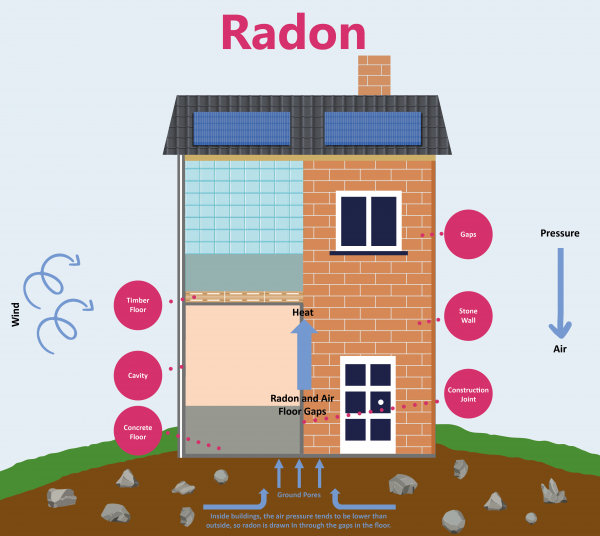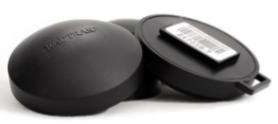Radon
We are undertaking a Radon testing programme, starting with our properties located in areas of higher exposure, through to medium and then low. We will be re-testing all homes over a 5 year period. We will contact all our customers to advise them of their Radon exposure level and what actions might be required to their homes. Further information about Radon, its health risks and areas affected can be found on the Public Health England Website.

What is radon?
Radon is a colourless, odourless radioactive gas. It is formed by the radioactive decay of small amounts of uranium that occur naturally in all rocks and soils. The amount of radon is measured in becquerels per cubic metre of air (Bq m-3). The average level in UK homes is 20 Bq m-3.
Where is Radon Found?
Radon is everywhere. Radon levels outdoors are low everywhere but levels indoors can be higher. For most homes the risk to peoples health is small.
Public Health England has published a UK map showing areas affected by radon, to see the map click here. The darker the colour on the radon maps, the greater the chance of a high level in a building. However, not all buildings, even in the darkest areas, have high levels.
Our exposure to radiation
We are all exposed to radiation from natural and man-made sources. Just 20 Bq m-3 (the average radon level in UK homes) gives us half our exposure to radiation from all sources. Every building contains radon, but the levels are usually low. The chances of higher levels depend on the type of ground. Radon levels vary between neighbouring homes and with different living styles.
What is low level?
Radon levels over 200 Bq m-3 will require action to reduce this level. We will undertake all the necessary works required to reduce the level to below 100 Bq m-3
What is the action level for Radon?
Public Health England measures radon levels in Becquerel per cubic metres of air (Bq m-3). Any reading of 100 Bq m-3 in homes will be considered the ‘Action Level’. This is the level at which action should be taken to reduce the radon concentration.
What do Radon test look like?
The testing is done by a small passive plastic sensor. This lives in a room for three months and takes in any Radon gas, which is then tested in a laboratory for the amount of radon gas that it has absorbed over the three months. It doesn’t need connection to power or anything else during this time. It can be ignored and forgotten about until it needs collection.



